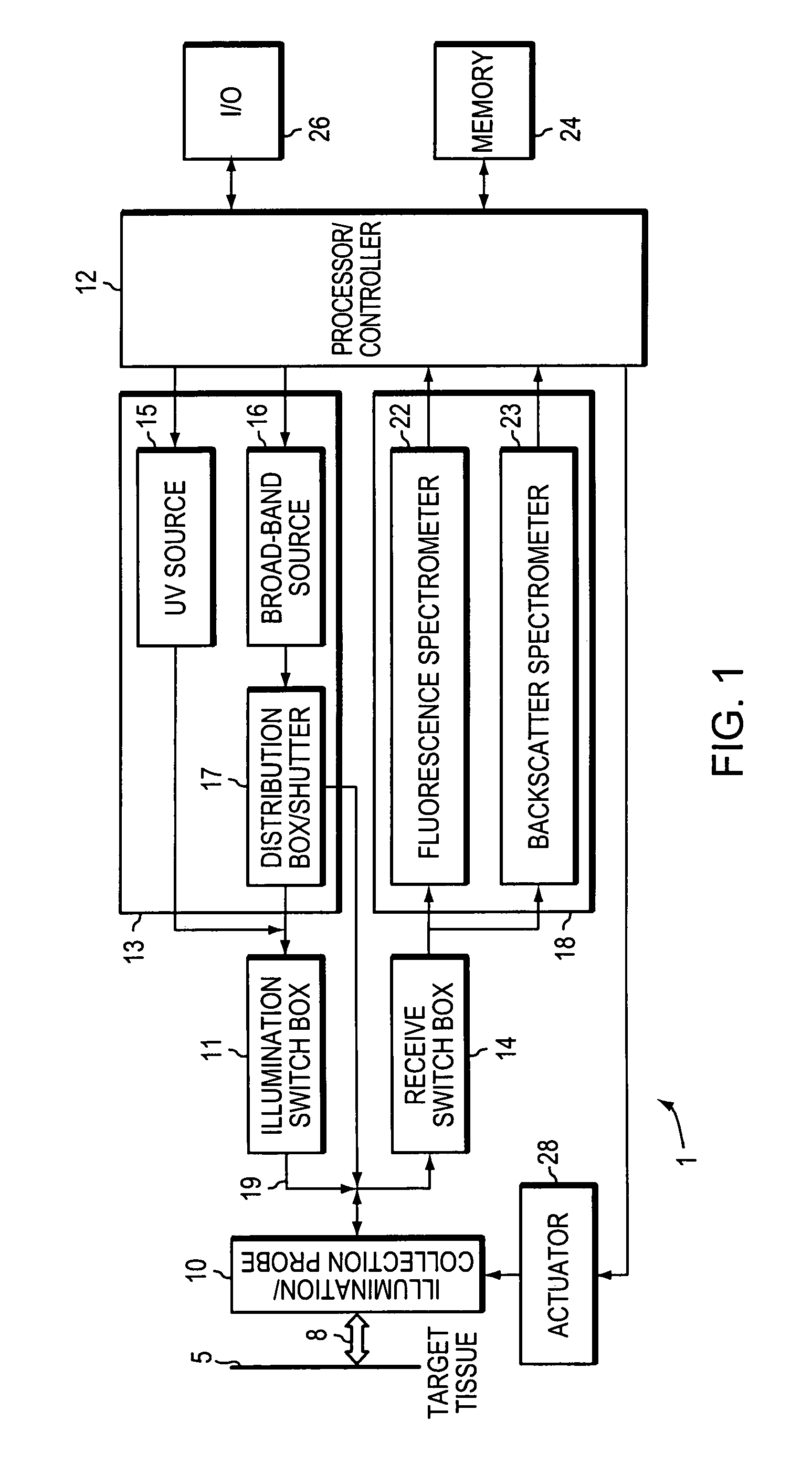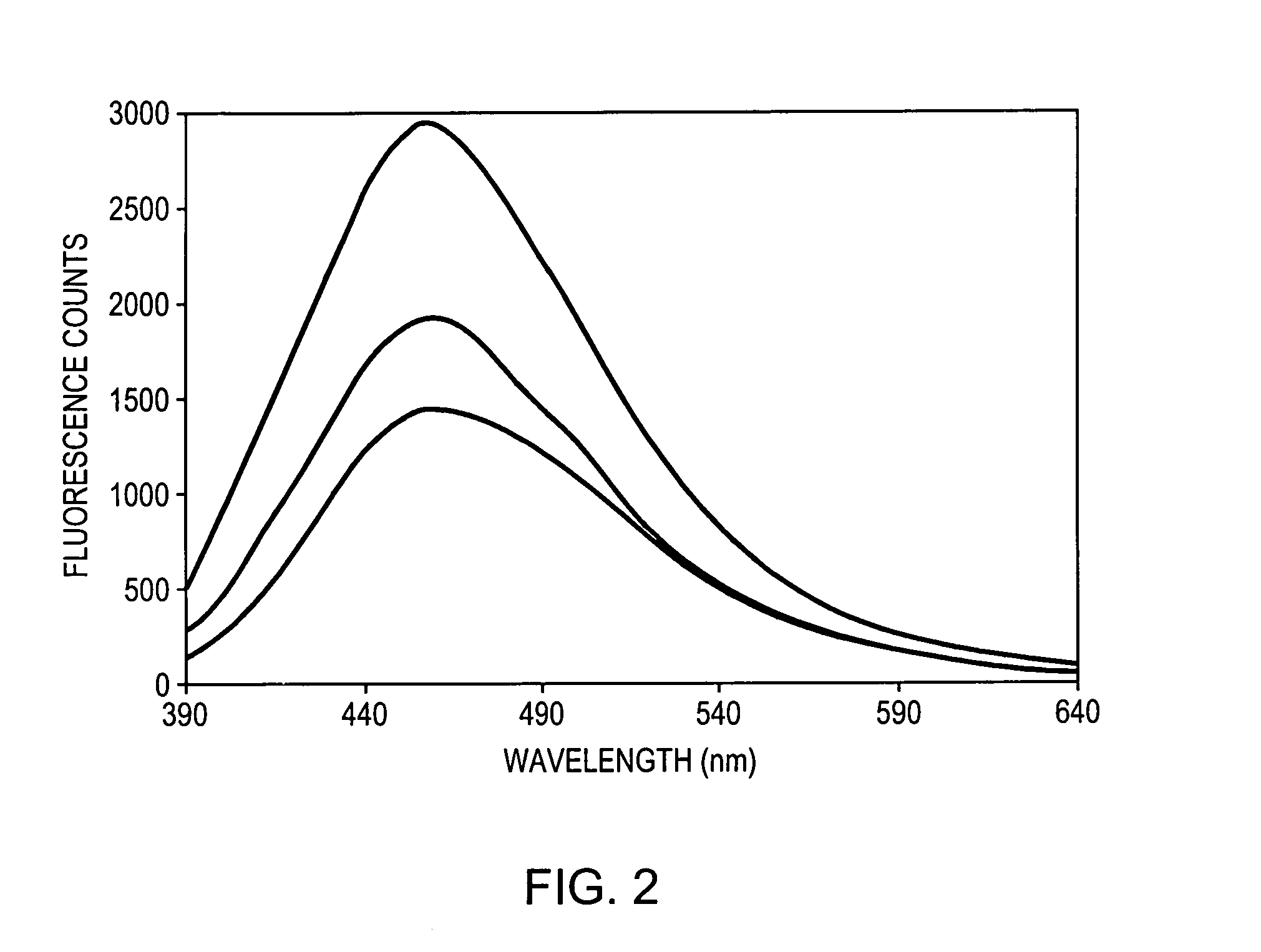Optical methods and systems for rapid screening of the cervix
a technology of optical methods and systems, applied in the direction of fluorescence/phosphorescence, spectroscopy, instruments, etc., can solve the problems of increasing the overall cost of unnecessarily overloading the health care system, and difficulty in, if not impossible, to see the surface changes caused by the presence of lesions
- Summary
- Abstract
- Description
- Claims
- Application Information
AI Technical Summary
Benefits of technology
Problems solved by technology
Method used
Image
Examples
Embodiment Construction
[0029]The present invention comprises systems and methods of using algorithms on optical responses of cervical tissue obtained from target tissues in subject population to be screened. The data are taken from a plurality of different sites within the target tissue, typically at least 100 such sites covering the region of interest in the tissue are probed. The optical response consists of fluorescence from the tissue induced by illumination with ultraviolet (UV) light and / or backscattering of white light from substantially the same tissue sites.
[0030]By way of background information, spectra are taken from the screened tissue, each from a different point in a given cervix. An algorithm, which classifies the detected spectra as either NED (No Evidence of Disease) or CIN (Cervical Intraepithelial Neoplasia), is applied to each of these spectra. Pathologists classify CIN into the three subgroups: CIN I, CIN II, and CIN III, depending of the stage or grade of the CIN. In addition, interm...
PUM
| Property | Measurement | Unit |
|---|---|---|
| wavelength | aaaaa | aaaaa |
| wavelength | aaaaa | aaaaa |
| spectral reflectivity | aaaaa | aaaaa |
Abstract
Description
Claims
Application Information
 Login to View More
Login to View More - R&D
- Intellectual Property
- Life Sciences
- Materials
- Tech Scout
- Unparalleled Data Quality
- Higher Quality Content
- 60% Fewer Hallucinations
Browse by: Latest US Patents, China's latest patents, Technical Efficacy Thesaurus, Application Domain, Technology Topic, Popular Technical Reports.
© 2025 PatSnap. All rights reserved.Legal|Privacy policy|Modern Slavery Act Transparency Statement|Sitemap|About US| Contact US: help@patsnap.com



